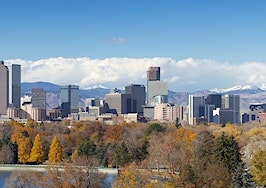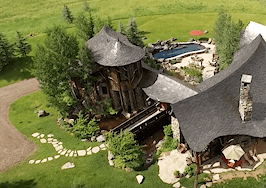A trendy coffee shop in Five Points, one of Denver’s oldest neighborhoods, was roundly criticized for putting out signage that made light of gentrification. The backlash brings to the forefront the conversation surrounding the ugly underbelly of the city’s rapid growth and transformation, namely, the displacement of longstanding, often-minority residents, the New York Times reported today.
On Saturday protesters gathered outside the shop called Ink! Coffee, a chain with 16 locations in Colorado, to express their distaste for a sign that read “Happily gentrifying the neighborhood since 2014” and another with the message “Nothing says gentrification like being able to order a Cortado.”
Denver, you should let these folks know what you think of their gleefully colonizing sign! 😊@inkcoffee
2851 Larimer Street
Denver, CO 80205
📞: 303-292-7327 pic.twitter.com/fq3KuDWRtA— ashley yates (@brownblaze) November 23, 2017
The signs drew ire from past and current residents of Five Points, a historic area described by the Denver Library as having been a “sanctuary for the African American community” that “is now undergoing an urban renaissance.” The Mayor of Denver, Michael Hancock, who has spoken of his concern about the city’s housing affordability, also condemned the advertising. The cafe was vandalized with graffiti and a smashed window.
Founder of Ink! Coffee Keith Herbert issued an apology on Facebook on the afternoon of Nov. 23. As of press time, the Five Points coffee shop had remained closed.
Denver is one of a number of American cities experiencing dramatic growth, a reality that comes with highs and lows.
Stacie Staub, a real estate expert and founder/owner of West + Main Homes, which has an office just a few blocks away from the coffee shop, described Ink! Coffee’s messages as a real “misstep in marketing.”

Stacie Staub
Every local business should be “cognizant of the history” of its residents when it comes to its marketing, she said, adding that the word gentrification has negative connotations and is simply not part of her company’s vocabulary.
Five Points, best known for its jazz music heritage, has a new World Trade Center being built nearby, is home to a number of art galleries and boasts a diverse range of architecture from Victorian homes to craftsman-style bungalows. It also has a light rail station, making for easy downtown and airport access, a perk that draws people to the area.
All over the Denver metropolitan area, the real estate community is seeing neighborhood transitions which bring pros and cons, Staub said. Around 10,000 people move to the city of 2.9 million every month and very few are leaving, said the owner.

Andrew Abrams
“We currently have about 6,000 active listings across 11 counties, and we would need 30,000 listings for a balanced market,” she said.
Staub has been pleased with efforts by the city to protect and keep residents in their neighborhoods, including a fund to preserve affordable housing launched by Mayor Hancock in 2016. The city has also recently created an environment that’s more welcoming to condo construction.
Andrew Abrams, a member of the Denver Metro Association of Realtors’ market trends committee and an associate broker with Vision Real Estate, said that while gentrification might be “natural” in fast-growing communities across the country, it isn’t necessarily good.
At a closing this morning when another agent said the street needed to “be gentrified,” Abrams’ hackles rose.
He advises agents whose markets are undergoing change: “Don’t use the word gentrification and be proactive; volunteer to help in any way that strengthens that community’s identity.” Agents can get involved in committees and try to help maintain culture throughout rapid change.
Realtors are mediators in their communities, he added. They have to make a decision on their business model: Do they want to help people simply buy and sell houses or are they there to have an impact on their community?







